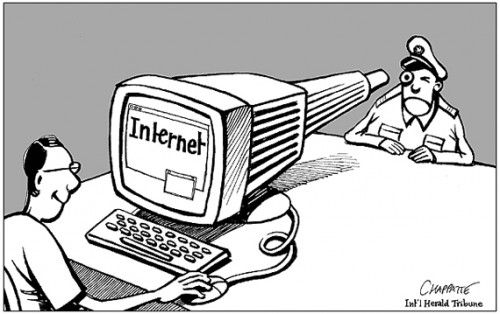A few weeks ago, Ranveer wrote a post about the different ways you can surf the net anonymously. In it he mentioned that you could surf using a VPN client. In this article I am going to explain what a VPN is.
A VPN (or virtual private network) is a secure network connection, which can be used to send files, browse the net and download material securely. As the transfer is protected by encryption, the data sent can’t be read if intercepted.
 There are three key parts of a VPN: a host computer which can send and receive data; the internet, which is used as a medium to transport/transmit the data; and a device which can connect to the network, in order to receive the data. The last part of the network (the receiver) isn’t essential, but without anything to view the data, what’s the point in sending it?
There are three key parts of a VPN: a host computer which can send and receive data; the internet, which is used as a medium to transport/transmit the data; and a device which can connect to the network, in order to receive the data. The last part of the network (the receiver) isn’t essential, but without anything to view the data, what’s the point in sending it?
Put simply, a VPN allows two computers to talk, as though they were connected on a private network, when in fact they are connected via a public network – the internet.
The way VPNs work is by establishing virtual point-to-point connections, using encryption or dedicated connections. Unless you are an IT engineer, you probably don’t need to worry about how it works though, just know that it does!
VPNs are very useful for businesses, as it enables employees to access secure internal files, remotely, without a security risk, as the network connection is private.
There are many reasons why an organisation may choose to have a VPN. VNPs can reduce firms need to hire dedicated secure long-distance lines to transmit data, as they use the existing infrastructure in place which the internet uses.
VNPs also reduce the need for long-distance telephone calls, which can often be very costly, therefore reducing them could save a business a lot of money!
As a VPN is a way of privately and securely connecting, it therefore be used to access the internet anonymously. That links back to what Ranveer discussed in terms of browsing the net anonymously. The way a VPN works, the data you request from a website when browsing, would go through the VPN first, before it gets to you, therefore if you are in the UK and the VPN is in the US, the site would think you were in the US due to it being the VPN requesting the data. Make sense?
There are definitely benefits of having a VPN for businesses, and if secure data needs to be shared to remote locations, it is one of the safest. That said, if the host has an unreliable IP, then the entire network is affected. Furthermore, they can also be costly to set up, as you need expert knowledge to establish them, which is why many organisations choose to outsource them, offloading the costs onto a third party who’s core business is VPN, and can therefore offer the service cheaper.
Do you have access to a VPN as part of your work? I would be interested to know, so if you do feel free to share your experiences in the comments.

